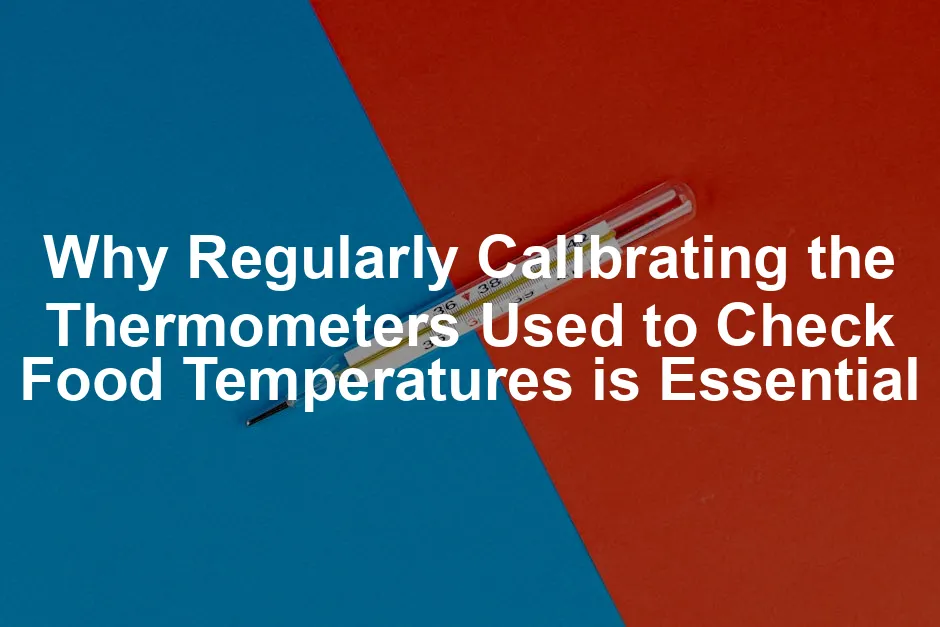
Why Regularly Calibrating the Thermometers Used to Check Food Temperatures is Essential
Introduction
Accurate temperature measurement is crucial for food safety. It ensures that food is cooked properly, preventing foodborne illnesses. Inaccurate readings can lead to serious health risks. Therefore, it’s vital to regularly calibrate thermometers used in food preparation.
Speaking of accurate temperature measurements, if you’re still using a traditional thermometer, it’s time to upgrade to a Digital Food Thermometer. These handy gadgets provide instant readings, ensuring your culinary masterpieces are cooked to perfection without the guesswork.
Summary and Overview
Thermometer calibration is the process of verifying and adjusting the accuracy of temperature measuring devices. In the food industry, this is essential to maintain safe food handling practices. Uncalibrated thermometers can result in incorrect cooking temperatures, leading to foodborne illnesses. This not only affects consumer health but can also result in legal issues for food establishments.
Various types of thermometers are used in kitchens, including digital, dial, and infrared. Each type requires specific calibration methods. In this article, we will discuss the importance of calibration, recommended frequencies, methods for calibration, compliance requirements, and common errors. Understanding these aspects will help you ensure food safety and quality in your kitchen.
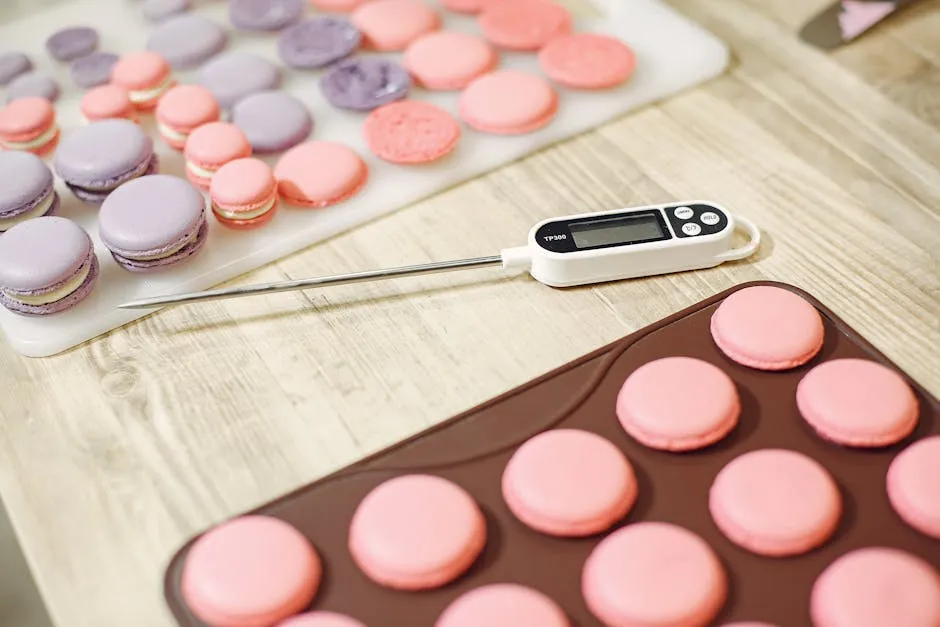
Importance of Calibration
Regularly calibrating your food thermometers is key to ensuring food safety and quality. Accurate temperature readings help prevent foodborne illnesses, which can arise from undercooked or improperly stored food. According to the CDC, about 48 million people get sick from foodborne pathogens each year in the U.S. That’s roughly 1 in 6 people! Many of these incidents stem from incorrect temperature management.
Calibration also helps you comply with health regulations. Regulatory bodies set strict food safety standards that dictate the temperatures at which food must be cooked and stored. Failing to meet these requirements can lead to severe consequences, such as fines or even shutdowns for food establishments. Regular calibration ensures that your thermometers provide accurate readings, allowing you to adhere to these regulations confidently.
Furthermore, maintaining calibrated thermometers guarantees quality assurance in food preparation. Consistent temperature control not only ensures safety but also enhances the taste and texture of food. For instance, properly cooked meat retains juiciness and flavor, while undercooked food can be unappetizing and unsafe.
In summary, routine thermometer calibration is vital in preventing foodborne illnesses and maintaining compliance with health regulations. It also plays a significant role in ensuring the quality of your culinary creations. It’s time to evaluate your current thermometer calibration practices. Are you doing enough to keep your kitchen safe and compliant?
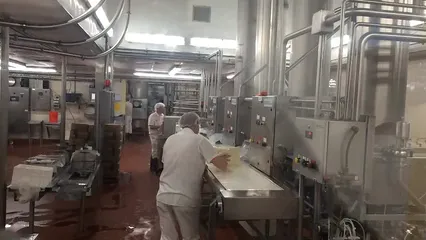
If you’re looking for a reliable thermometer, consider the Digital Meat Thermometer. It’s user-friendly and perfect for ensuring that your meats are cooked to the right temperature every time.
Monthly Calibration for General Use
For home kitchens or less frequent use, a monthly calibration is recommended. This simple practice ensures your thermometer provides accurate readings. Food safety authorities, like the USDA, emphasize that regular checks can prevent foodborne illnesses. Even if you don’t cook every day, food thermometers can drift over time. By calibrating monthly, you maintain reliability, especially when preparing meals for family gatherings or special occasions.
To assist with your cooking adventures, a Cooking Timer can be a lifesaver! This handy tool helps you keep track of cooking times, ensuring nothing gets overcooked or burned, much to the relief of your family and taste buds.

After Physical Impact
Dropping or damaging your thermometer can lead to inaccurate readings. If this happens, recalibration is essential. A thermometer may still look fine, but internal components can be misaligned. Even a small drop can affect its precision. Always check and recalibrate after any physical impact to ensure safety while cooking.
For those instances when you need a backup thermometer, consider investing in an Infrared Thermometer. It allows for quick temperature checks without direct contact, perfect for those messy cooking situations!

Environmental Considerations
Extreme temperatures can also impact thermometer accuracy. If your thermometer has been exposed to hot or cold conditions, recalibration is necessary. Fluctuations in temperature may cause the device to function incorrectly. Regular checks during seasonal changes, such as summer barbecues or winter feasts, can help maintain accuracy. This ensures your food is cooked safely and remains delicious.
Speaking of seasonal changes, make sure you have a good set of Heat Resistant Oven Mitts. They’ll protect your hands from burns while you’re handling hot dishes straight from the oven.

Before Critical Measurements
Calibration is especially crucial before key temperature checks. High-risk foods, like poultry and seafood, need precise cooking temperatures to avoid illness. Always calibrate your thermometer before cooking these items. It’s a small step that can make a big difference in food safety. Holiday meals and large gatherings are perfect examples of when to double-check your thermometer’s accuracy.
In conclusion, regular calibration of your food thermometer is vital for ensuring safety and quality in your cooking. To help you remember, consider using a checklist for thermometer calibration. This simple tool can remind you when to check and maintain your kitchen equipment.

Boiling Water Calibration Method
The boiling water calibration method is a simple yet effective way to ensure your thermometer gives accurate readings. To start, fill a pot with clean water and bring it to a rolling boil. Then, carefully insert the thermometer probe into the water, ensuring it does not touch the pot’s sides or bottom. After a minute, the thermometer should read 212°F (100°C) at sea level. If it doesn’t, adjust the thermometer according to the manufacturer’s instructions or note the difference to recalibrate later.
This method is especially useful when you want to check the thermometer’s accuracy quickly. It’s ideal for larger cooking tasks where precision matters, such as preparing meats or dishes that require exact temperatures. And if you’re serious about your cooking, a Cooking Thermometer with Instant Read Feature can save you time and hassle, allowing you to get back to your culinary creations without delay.
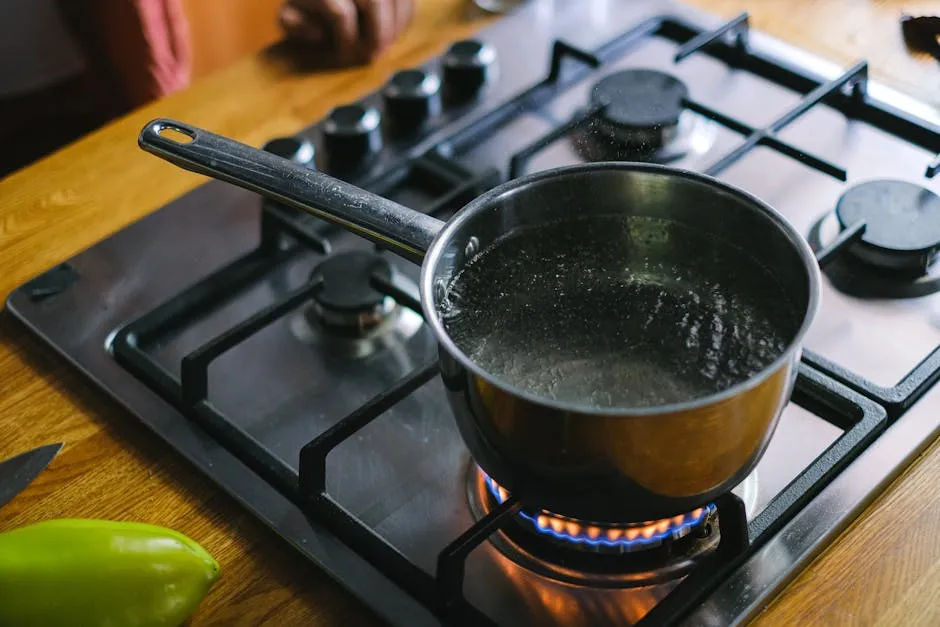
Professional Calibration Services
Using accredited calibration services offers several benefits for those serious about thermometer accuracy. Professional services ensure that your thermometer is calibrated to industry standards. They use precise instruments and methods, which can achieve accuracy levels within ±0.5°F (±0.3°C) or better.
Investing in these services can save you from food safety violations and costly mistakes. While home calibration methods are useful, they may not provide the same level of precision as professional services. Plus, these services often provide documentation, which can be crucial for compliance with health codes or food safety regulations.
If you rely on thermometers for high-use equipment, consider scheduling a professional calibration session. This ensures that your kitchen operates safely and efficiently, helping you maintain the highest food quality standards. By prioritizing accurate measurements, you protect your customers and your reputation.
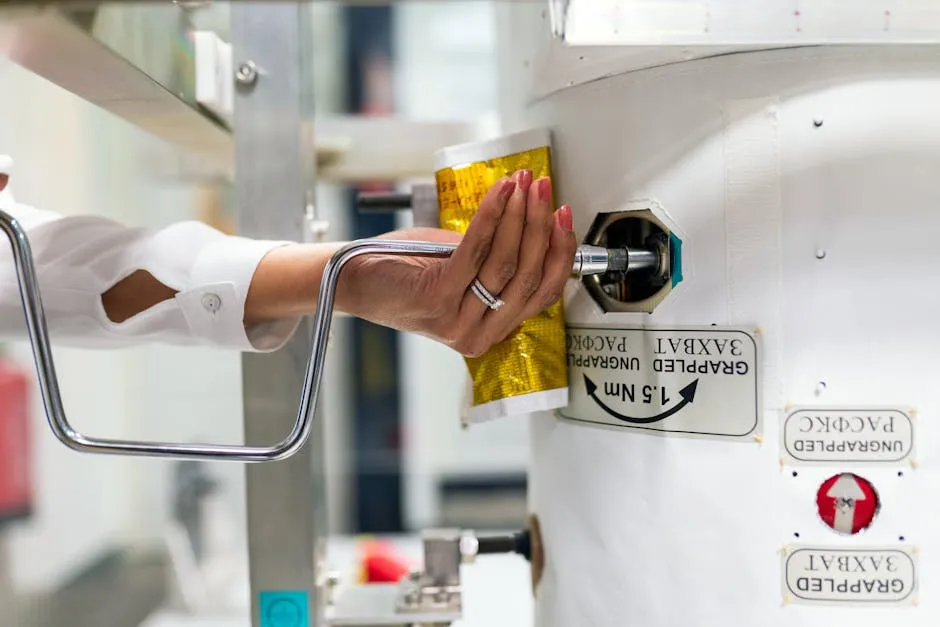
And while you’re at it, why not check out a Professional Food Safety Guidelines Book? It’s an essential read for anyone looking to enhance their knowledge of food safety practices!
Documentation and Record Keeping
Keeping accurate records of thermometer calibration is crucial for compliance and safety audits. Regulatory bodies like the FDA and USDA mandate strict adherence to food safety standards. These guidelines help ensure that food is cooked and stored at safe temperatures. If a thermometer fails to meet these standards, the consequences can be severe.
For instance, businesses may face fines or even closures due to food safety violations. In fact, approximately 48 million people in the U.S. fall ill from foodborne pathogens each year. Maintaining proper documentation can help mitigate liability and enhance safety. When audits occur, having an organized record of calibration can demonstrate your commitment to food safety.
Documentation serves as proof that your thermometers are regularly calibrated. It shows that you take food safety seriously. This can protect your business in legal situations, should any foodborne illness arise.

Additionally, clear records assist with internal training and improving staff awareness. Employees can see the importance of calibration and understand best practices. Therefore, it’s essential to keep a detailed calibration log. This simple step can help ensure your kitchen operates within food safety compliance. And while you’re organizing, don’t forget to invest in Food Storage Containers to keep your ingredients fresh and organized!
So, start documenting your thermometer calibrations today. Your commitment to excellence in food safety will not only protect your customers but also your reputation.
Please let us know what you think about our content by leaving a comment down below!
Thank you for reading till here 🙂
All images from Pexels




